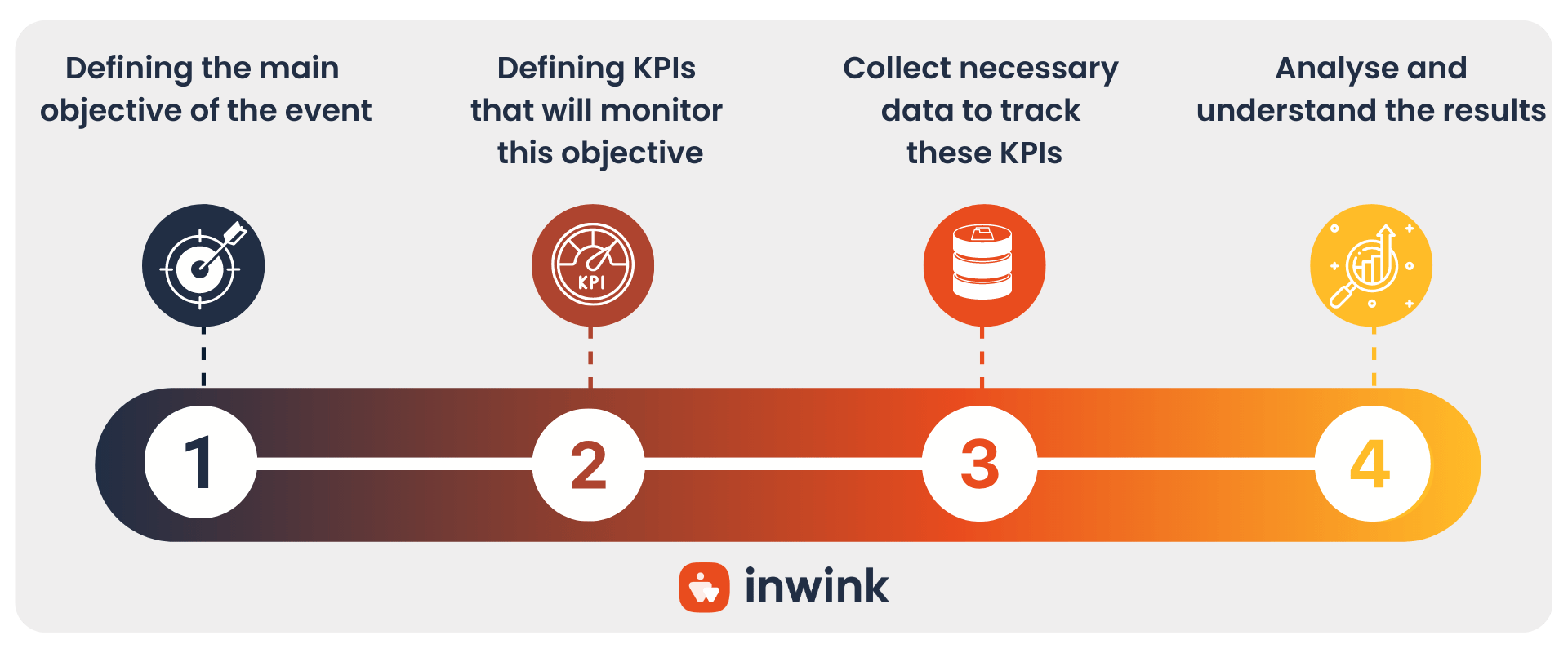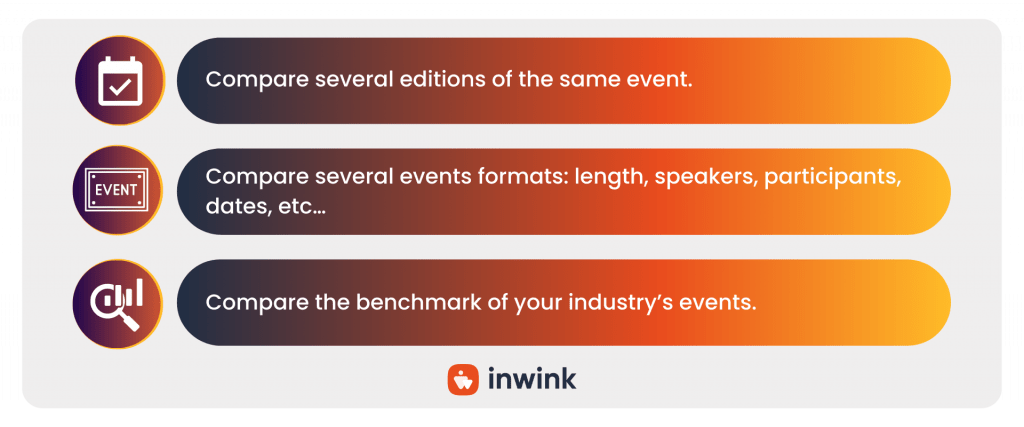In 2022, the marketing budget represented 9.5% of a company’s revenue, compared to 6.4% in 2021 according to Gartner. The share of this budget allocated to event-driven activities was 18.8%.
While the budget has increased overall, it is still very important to be able to measure the impact of its event operations and thus justify the required investments.
To this end, we offer you a method to calculate the ROI of future events.
What is Event ROI?
The return on investment (ROI) is a performance measure used to evaluate the profitability of an investment. It is the ratio between the profit of an operation and the costs incurred for this operation.
ROI = Results / Costs
The result is determined according to the objective defined for the operation: sales or revenue generated for example, or any other performance indicator. The calculation of the event ROI is therefore a direct measure of the effectiveness and impact of an event.
Why calculate event ROI?
Events often represent a significant investment in an organization’s marketing budget.
Measuring events ROI fulfills two key objectives for the organizing teams:

Justifying event investments to management
For management to grant the requested budget for an investment, a demonstration indicating tangible and measurable results will most likely be asked.
In the context of events, this demonstration can only be done by a forecasted ROI objective, and then by a measurement of the results achieved.

Measuring the efficiency of marketing action
Calculating the ROI and analyzing what worked and what didn’t will allow you to make informed decisions for your next events: change of format, increase or decrease of the target audience, adjustments to the communication plan, redefinition of the budget…
How to calculate event ROI?
Calculating the ROI of an event can be complicated as its effects and impacts aren’t always immediate nor easy to measure.
The positive effects of an event will sometimes be felt in the long term: the reputation of your brand, the notoriety and image of your organization, the first commercial contacts that will materialize several months later, etc.
No need to panic though! Even if the approach can’t be 100% extensive and has to focus on elements measured with certainty, there are ways to monitor the ROI of your event.
We recommend a 4-step method:

Step 1 – Defining the main objective of the event
The first stage is defining the main business objective of the event.
Based on whether you organize tradeshows as a business, free congresses to share knowledge, or branded events to generate leads, the context, challenges, and objectives of your event won’t be the same.
BtoB events can be categorized into 4 big business objectives:
- Increase notoriety and develop brand image: for example BIG by bpifrance.
- Generate qualified business leads: for example the Digital Benchmark by EBG.
- Inform and retain customers: for example Botify Connect.
- Generate partners satisfaction and increase their notoriety: for example the Prestashop’s roadshow.
Step 2 – Defining KPIs that will monitor this objective
After having defined the main objective for your event, you’ll need to determine the indicators that will measure and verify that the objective has been reached.
Brand image and notoriety
| Sub-goal to be measured | KPI |
| Maximize Event registrations | Number of registrations |
| Maximize the number of qualified registrations | Number of targeted registrations / Number of total registrants |
| Maximize media coverage | Number of media placements |
| Maximize social media presence | Number of social media impressions |
| Maximize event visibility | Number of views/visits on the event site |
| Bring traffic to your website | Number of visits to the organizing brand’s website around the event period / average number of visits during a period without events |
| Develop positive brand image | Level of satisfaction of participants |
Generation of commercial leads
| Sub-goal to be measured | KPI |
| Generate leads | Number of generated leads contacts |
| Generate opportunities | Number of opportunities created |
| Maximize the quality of generated leads | Number of qualified leads created / total number of actual leads created |
| Generate pipeline | Value of the generated commercial pipeline |
| Win new accounts | Number of closed deals after the event |
Inform and retain customers
| Sub-goal to be measured | KPI |
| Maximize the use of the product/service by customers | Number of active users after the event |
| Increase the scope of use of the product/service by customers | Number of demos performed |
| Maximize customer satisfaction | Level of customer satisfaction |
| Retain existing customers (upsell and renew) | Number of business meetings with existing customers |
| Build and federate a community of customers | Number of networking meetings between customers |
| Retain existing customers (renew) | Number of renews |
Generate partners satisfaction
| Sub-goal to be measured | KPI |
| Maximize perceived value of partner packages | Number of contacts made per partner |
| Maximize perceived value of partner packages | Number of leads generated per partner |
| Maximize perceived value of partner packages | Number of networking meetings per partner |
| Maximize partner visibility | Number of views on partner pages |
| Maximize partner satisfaction | Level of partner satisfaction |
Step 3 – Collect necessary data to track these KPIs
Once you’ve defined the main objective of your event, as well as the main KPIs, the next step is to gather data that will allow you to monitor these indicators.
To do this, you need to choose an event management technology platform that allows you to collect and track all event data in real-time, like inwink.
Check out our article: What data can you collect from your events?
You may then connect your event management solution with your CRM, or your marketing automation tool, to pull up this data and merge them with other indicators.
Step 4 – Analyse and understand the results
You’ve received results for the defined KPIs for your event and now it’s time to analyze and understand them.
This step consists in comparing all the costs generated to organize the event with the actual results.
Since your KPIs aren’t always convertible into euros, your ROI ratios will not give an immediately interpretable percentage.
You can however manage to correlate your evaluation to ratios such as:
- Each qualified lead generated on the event cost XX euros;
- Each press mention following the event cost XX euros.
To analyze these results, there are several options:

In conclusion, in a business context where each action has to be justified by tangible results, it is essential to calculate the return on investment of the events you organize. This is also a great way for the organizer to bring out lessons learned for future operations.
By following these 4 steps, you’ll have the necessary framework to successfully and systematically carry out this challenging task!

